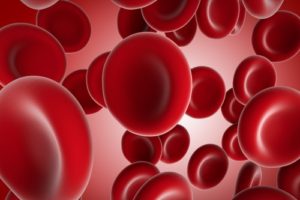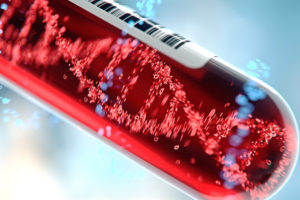Hemophilia A Samples
Bay Biosciences provides high quality, clinical grade, cryogenically preserved sera (serum), plasma and peripheral blood mononuclear cells (PBMC) biofluid samples from patients diagnosed with Hemophilia A.
The sera (serum), plasma and PBMC biofluid specimens are processed from Hemophilia A patient’s peripheral whole-blood using customized collection and processing protocols. The Hemophilia A biofluid samples are collected from unique patients diagnosed with Hemophilia A disease and are provided to a valued pharmaceutical customer for research, diagnostics, discovery and drug development.
Detailed clinical data, patients history, symptoms, complete blood count (CBC), serology. MRI, histopathology information, elevated biomarker levels, genetic and metabolic information associated with Hemophilia A specimens is provided to a valued customer for research, development and drug discovery.
The Hemophilia A disorder sera (serum), plasma and peripheral blood mononuclear cells (PBMC) biofluid are processed from patients peripheral whole-blood using customized collection and processing protocols.

Hemophilia A Overview
Hemophilia A, is also called Factor VIII (which is an essential blood-clotting protein) deficiency or classic hemophilia, is a genetic disorder caused by missing or defective factor VIII (FVIII), a clotting protein. Normal levels of FVIII range from 50% to 150%. Levels below 50% or half of what is needed to form a clot determine a patients symptoms. Although it is passed down from parents to children, about 1/3 of cases found have no previous family history. Hemophilia A is a condition that keeps the blood from clotting normally. That means the body has problems stopping bleeding, both outside and inside the body. Hemophilia condition can be treated, and in some cases the treatment can be given at home. Hemophilia patients can lead a full life when they have the right treatment plan in place.
According to the US Centers for Disease Control and Prevention (CDC), hemophilia occurs in approximately 1 in 5,617 live male births. Hemophilia A affects 1 in 5,000 male births. About 400 babies are born with hemophilia A each year. There are between 30,000 – 33,000 males males with hemophilia in the United States.
Hemophilia is usually an inherited disorder associated with bleeding in which the blood does not clot properly. There are different types of hemophilia disorder. With hemophilia A, the body doesn’t have enough of a protein called factor VIII, which it needs to make clots and stop bleeding. Hemophilia A can be mild, moderate, or severe, depending on how little the patient have of factor VIII. More than half of the hemophilia A disorder have the severe form of the disease. Hemophilia A usually runs in families, but about one-third of people with the disease doesn’t have a family history.
Genetics of Hemophilia A
Hemophilia A is an inheritable disease , which means it is passed down from parents to children. The X and Y chromosomes are called sex chromosomes. The gene for hemophilia is carried on the X chromosomes. Hemophilia is inherited in an X-linked recessive manner. Females inherit two X chromosomes, one from their mother and one from their father (XX). Males inherit an X chromosome from their mother and a Y chromosome from their father (XY). That means if a son inherits an X chromosome carrying hemophilia from his mother, he will have hemophilia. It also means that fathers cannot pass hemophilia on to their sons.
But because daughters have two X chromosome, even if they inherit the hemophilia gene from their mother, most likely they will inherit a healthy X chromosome from their father and not have hemophilia. A daughter who inherits an X chromosome that contains the gene for hemophilia is called a carrier. She can pass the gene on to her children. Many women who carry the hemophilia gene also have low factor expression, which can result in heavy menstrual bleeding, easy bruising, and joint bleeds. Some women who have the hemophilia gene have factor expression low enough to be diagnosed with hemophilia.
For a female carrier, there are four possible outcomes for each pregnancy:
1. A girl who is not a carrier
2. A girl who is a carrier
3. A boy without hemophilia
4. A boy with hemophilia
Causes of Hemophilia A
Hemophilia A comes from your genes, it is inherited disorder from your parents. Or it can happen if a certain gene changes before you’re born. This change is called a spontaneous mutation. The hemophilia A gene mutation happens on the X chromosome. Women get one X chromosome from their mother and one from their father. Men get an X from their mother and a Y from their father. Most women with the problem gene are carriers and have no symptoms, but they can pass it to their sons. Therefore the disease nearly always shows up in boys, not girls.
A rare type of hemophilia A is acquired hemophilia. It’s most common in people 60-80 years of age. If you have this kind, your immune system attacks healthy tissue called clotting factors in your blood. Acquired hemophilia tends to happen alongside these following conditions:
- Pregnancy
- Autoimmune diseases
- Cancer
- Multiple Sclerosis
Signs and Symptoms of Hemophilia A
The symptoms of hemophilia A depends on whether you have a mild, moderate, or severe case. Some patients don’t get a diagnosis until after one of these things happens to them when they’re adults.
Mild hemophilia A. If you’re in this group, you may have an episode of heavy bleeding:
- After you have surgery or another procedure, like having a tooth pulled.
- After childbirth
- After a serious injury
- During your period
Moderate hemophilia A. Moderate hemophilia usually means you:
- Bleed a lot when injured
- Bleed without an injury (spontaneous bleeding)
- Bruise easily
- Bleed a lot after a vaccination
Severe hemophilia A. In addition to bleeding after an injury, you may also have frequent episodes of bleeding, often into the joints and muscles, without being able to figure out a specific cause. When you have severe hemophilia A, bleeding can also happen in the brain. It’s rare, but if you have a head bump, even if it’s minor, patients can have the following symptoms:
- Prolonged headaches
- Throwing up
- Sleepiness/tiredness
- Sudden weakness or problems walking
- Double vision
- Convulsions or seizures
Mild hemophilia A: 6% up to 49% of FVIII in the blood. Patients with mild hemophilia A generally experience bleeding typically only after serious injury, trauma, or surgery. In many cases, mild hemophilia is not diagnosed until an injury, surgery or tooth extraction results in prolonged bleeding. The first episode may not occur until adulthood. Women with mild hemophilia often experience heavy menstrual bleeding, and can hemorrhage (bleed extensively) after childbirth.
• Moderate hemophilia A: 1% up to 5% of FVIII in the blood. Patients with moderate hemophilia A tend to have bleeding episodes after injuries.
• Severe hemophilia A. <1% of FVIII in the blood. People with severe hemophilia A experience bleeding following an injury and may have frequent spontaneous bleeding episodes, bleeds that occur without obvious cause, often into their joints and muscles. Many males with severe hemophilia are diagnosed due to bleeding after circumcision.
Diagnosis of Hemophilia A
Diagnostic tests are performed to evaluate how long it takes for the blood to clot to determine if someone has hemophilia. A clotting factor test, called an assay, will show the type of hemophilia and the severity of the disease, or how much clotting factor the person produces on their own. Most people who have a family history of hemophilia will ask that their baby boys be tested soon after birth to see if they have hemophilia. If there is no family history of hemophilia, people often notice bleeding that takes longer to stop or lots of bruising. Many babies born with severe hemophilia are diagnosed if there is prolonged bleeding after circumcision.
For girls, it often takes seeing worsening of symptoms for the diagnosis process to begin. Most girls are not tested for hemophilia before puberty. Heavy periods are a symptom of a bleeding disorder in women and girls. If there is a known family history, it is important to monitor for symptoms. It is recommended that women who have a family history of hemophilia get tested before getting pregnant, to help prevent complications during childbirth.

Bay Biosciences is a global leader in providing researchers with high quality, clinical grade, fully characterized human tissue samples, bio-specimens and human bio-fluid collections from cancer (tumor) tissue, cancer serum, cancer plasma cancer PBMC and human tissue samples from most other therapeutic areas and diseases.
Bay Biosciences maintains and manages it’s own bio-repository, human tissue bank (biobank) consisting of thousands of diseased samples (specimens) and from normal healthy donors available in all formats and types. Our biobank procures and stores fully consented, deidentified and institutional review boards (IRB) approved human tissue samples and matched controls.
All our human human tissue collections, human specimens and human bio-fluids are provided with detailed samples associated patient’s clinical data. This critical patient’s clinical data includes information relating to their past and current disease, treatment history, lifestyle choices, biomarkers and genetic information. Patient’s data is extremely valuable for researchers and is used to help identify new effective treatments (drug discovery & development) in oncology, other therapeutic areas and diseases. This clinical information is critical to demonstrate their impact, monitor the safety of medicines, testing & diagnostics, and generate new knowledge about the causes of disease and illness.
Bay Biosciences banks wide variety of human tissue samples and biological samples including cryogenically preserved -80°C, fresh, fresh frozen tissue samples, tumor tissue samples, FFPE’s, tissue slides, with matching human bio-fluids, whole blood and blood derived products such as serum, plasma and PBMC’s.
Bay Biosciences is a global leader in collecting and providing human tissue samples according to the researchers specified requirements and customized, tailor made collection protocols. Please contact us anytime to discuss your special research projects and customized human tissue sample requirements.
Bay Biosciences provides human tissue samples (human specimens) from diseased and normal healthy donors; including peripheral whole-blood, amniotic fluid, bronchoalveolar lavage fluid (BAL), sputum, pleural effusion, cerebrospinal fluid (CSF), serum (sera), plasma, peripheral blood mononuclear cells (PBMC’s), saliva, Buffy coat, urine, stool samples, aqueous humor, vitreous humor, kidney stones, renal calculi, nephrolithiasis, urolithiasis and other bodily fluids from most diseases including cancer. We can also procure most human bio-specimens and can do special collections and requests of human samples that are difficult to find. All our human tissue samples are procured through IRB approved clinical protocols and procedures.
In addition to the standard processing protocols Bay Biosciences can also provide human plasma, serum, PBMC bio-fluid samples using custom processing protocols, you can buy donor specific sample collections in higher volumes and specified sample aliquoting from us. Bay Biosciences also provides human samples from normal healthy donors, volunteers, for controls and clinical research, contact us Now.
日本のお客様は、ベイバイオサイエンスジャパンBay Biosciences Japanまたはhttp://baybiosciences-jp.com/contact/までご連絡ください。


